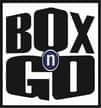Find Affordable Self Storage: Your Ultimate Guide
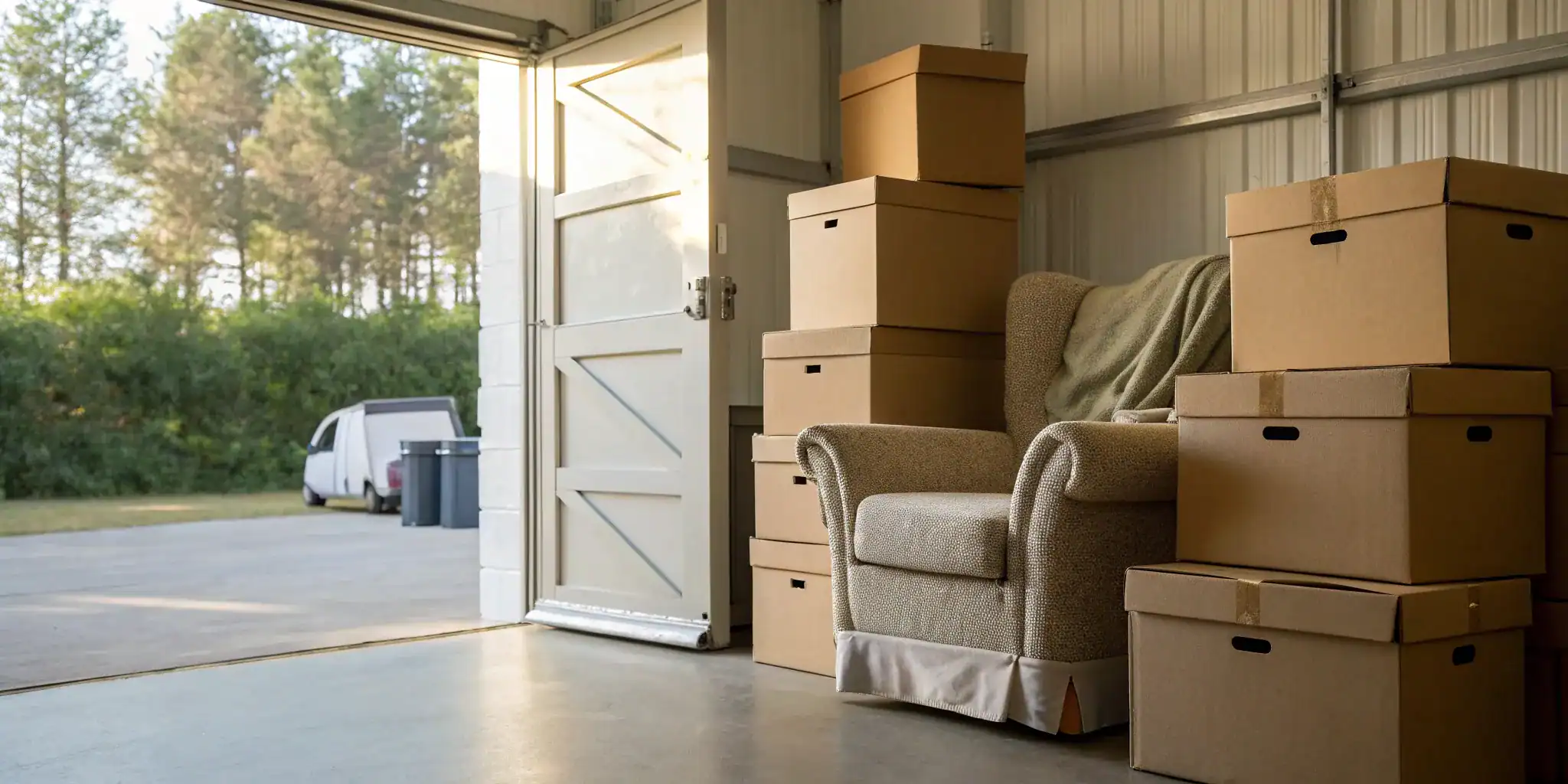
Let’s be honest: the physical work of moving is draining enough without adding extra steps. The traditional storage process—renting a truck, loading it up, driving to a facility, and unloading everything again—is exhausting. It’s easy to assume that a more convenient option must be more expensive, but that’s not always the case. Finding a solution that saves you time and effort can also save you money. This guide will walk you through how to find affordable self storage that simplifies the entire experience. We’ll explore modern options that eliminate the hassle and show you how to compare companies to get the best value for your money.
- Save 50% on move-in
- No truck rental
- Ground level


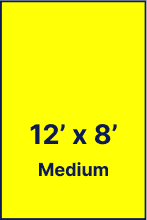

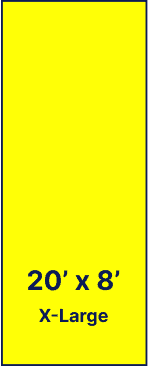





- Save 50% on move-in
- No truck rental
- Ground level
Box-n-Go Portable Storage Unit Sizes

Key Takeaways
- Define value beyond the monthly rate: A low price doesn’t matter if your items are insecure or hard to get to. Prioritize key features like solid security, ground-level access, and climate control to find a solution that offers real peace of mind.
- Be proactive about your budget: You can lower your total cost by finding first-month promotions, asking for long-term rates, and packing efficiently. Always ask about admin fees, insurance, and late payment rules to prevent surprise charges on your bill.
- Choose a method that simplifies the process: How you get your items into storage matters. Consider options like portable containers that are delivered to your door to skip the truck rental and double-handling, and organize your unit with a clear aisle for easy access later.

What Goes Into Self-Storage Pricing?
Figuring out self-storage pricing can feel like trying to hit a moving target. You see one price online, but then your friend in another city pays something completely different. The good news is that it’s not random. The monthly cost of a storage unit comes down to a handful of predictable factors. Once you understand what they are, you can find a space that fits your belongings and your budget without any surprises.
The goal is to pay for exactly what you need—nothing more, nothing less. By breaking down the costs, you can confidently choose a unit that protects your items while being kind to your wallet. Let’s look at the main components that determine that final monthly price.
Average Costs by Location
The biggest variable in storage pricing is, without a doubt, location. Just like with real estate, where you rent matters. On average, you can expect to pay anywhere from $35 to $100 per month for a standard unit, but that’s a huge range. In a dense urban area like Los Angeles, the average monthly price jumps to around $153. This is because demand is higher and space is limited. A comprehensive storage unit pricing guide can give you a better sense of what to expect in your specific city, but always use local searches for the most accurate numbers.
Key Factors That Affect the Price
Beyond your zip code, a few other key details will shape your monthly bill. The most straightforward factor is the size of the unit. A small 5×5 unit, perfect for a few boxes and a small piece of furniture, might cost around $40 a month, while a massive 10×30 unit that can hold the contents of a multi-bedroom house could be over $290. Another major consideration is climate control. These units maintain a consistent temperature and humidity level, which is ideal for sensitive items like wood furniture, electronics, or artwork. Expect to pay about 17% more for this feature. Finally, different facilities offer different amenities, so it’s always a good idea to compare local options to see what you’re getting for your money.
How to Find an Affordable Storage Unit
Finding a storage unit that fits your budget is totally doable with a little focused research. Instead of calling every facility in town, you can streamline the process to find a great deal without sacrificing quality. This simple, three-step approach helps you compare options, decide what you actually need, and choose a company you can trust with your belongings.

Use Online Tools to Compare Prices
The best place to start your search is online. Comparison websites like SpareFoot are incredibly helpful because they gather prices, unit sizes, and amenities from multiple facilities all in one place. This saves you the hassle of visiting a dozen different websites and gives you a solid baseline for what you should expect to pay. It’s the most efficient way to begin your research, making it much easier to spot a genuinely good deal and narrow down your top contenders.
Decide Which Features Matter Most
Once you have a general idea of pricing, figure out what you actually need. Paying for features you won’t use is a fast way to overspend. The two biggest factors are unit size and climate control. Don’t guess on space; most storage companies offer a size guide to help you visualize what fits. Then, consider what you’re storing. If it’s just furniture and boxes, you might not need climate control. But for sensitive items like electronics or artwork, the extra cost is a worthwhile investment to protect them from damage.
Store on your driveway or inside our secure facility. Load/unload only once. Ground level access.
Always Read the Customer Reviews
A low price means nothing if the facility is poorly managed or insecure. Before you commit, spend time reading what past customers have to say. Check recent reviews on Google and Yelp, and don’t forget community forums. You can find brutally honest feedback on sites like Reddit, where people share unfiltered experiences. Look for comments about security, cleanliness, and management responsiveness. Consistent positive feedback is a great sign, while repeated complaints about break-ins or surprise fees are a major red flag. This step helps you see the true value beyond the price tag.
Must-Have Features for Your Storage Unit
A great price is a fantastic start, but a storage unit’s features determine its real value. The cheapest option isn’t always best if it means your belongings are at risk or access is a hassle. Before signing a contract, think about what you truly need. The right features provide peace of mind and make the whole experience smoother. The three main features to consider are security, accessibility, and climate control. Let’s walk through what each one means for you and your stuff.

Look for Strong Security
When you place your items in storage, you’re trusting a company with your possessions, so security should be at the top of your list. A great facility will have multiple layers of protection, like 24/7 video surveillance, electronic gate access, and bright lighting. Some companies store portable containers inside a secure warehouse, adding another level of protection. Reading customer experiences on sites like Yelp can give you real-world insight into how seriously a company takes safety. Don’t be afraid to ask the manager directly about their security protocols.
Check for Easy Access
Think about how often you’ll need to get to your things. Accessibility is all about convenience. The last thing you want is to haul heavy boxes up stairs or down long hallways. This is where ground-level access makes a world of difference, letting you park right near your unit for simple loading. Some services take this a step further by delivering a portable container to your home. You can load it on your own schedule, right at your doorstep. This removes the need to rent and drive a moving truck, simplifying the entire process.
- Call or order online in minutes
- We deliver storage to you
- Pack at home, at your convinience
- Store on your property or at indoor facility
- Move locally or nationwide
- Call or order online in minutes
- We deliver 16′ and 20′ storage to you
- Pack at home, loading labor available
- Store on your property
- Secured Extra Space
Do You Need Climate Control?
Depending on what you’re storing, climate control might be a necessity. This feature maintains a consistent temperature and humidity level, protecting items from extreme heat, cold, and moisture. If you’re storing wooden furniture, electronics, artwork, or important documents, climate control is a wise investment. Without it, these items can warp, crack, or grow mold. Take a quick inventory of what you plan to store. If your items are sensitive to temperature swings, make sure you choose one of the portable storage units or traditional spaces that offer this important feature.
Simple Ways to Lower Your Storage Bill
Let’s be honest, no one loves seeing an extra bill hit their bank account. While storage is a necessary expense for many of us during a move or life transition, the cost doesn’t have to break the bank. It’s easy to assume that all storage prices are fixed, but there’s often more flexibility than you might think. With a little bit of research and some strategic planning, you can find an affordable solution that fits your budget without sacrificing the quality or security you need for your belongings.
Saving money on storage often comes down to being a savvy consumer. It means looking beyond the first price you see and asking the right questions. From finding introductory promotions to simply packing your boxes more efficiently, every small step can add up to significant savings over time. Here are a few simple, actionable strategies you can use to keep your storage costs down and get the most value from your rental.
Look for Deals and Discounts
Many storage facilities attract new customers with special promotions, and you should absolutely take advantage of them. You’ll often see offers like the first month free or a percentage off for the first three months of your rental. Before you commit, spend some time researching what’s available in your area. Using an online marketplace can help you compare local deals and see all the introductory offers in one place. Taking advantage of a discount is one of the easiest ways to reduce your initial moving and storage expenses, leaving more cash in your pocket.
Ask About Long-Term Rates
If you anticipate needing storage for more than just a month or two, always ask about discounts for long-term rentals. Facilities are often willing to provide better monthly rates for customers who commit to a longer period, such as six months or a year. This isn’t always advertised on the company’s website, so don’t be shy about speaking with a manager to see if they can offer a better deal for your extended stay. Understanding the complete storage unit pricing structure can save you a surprising amount of money over the life of your rental.

Pack Your Unit to Save Space
How you pack your unit has a direct impact on its cost. A well-organized space allows you to fit more belongings into a smaller, less expensive unit. To make the most of your space, use boxes of the same size for easy and stable stacking, disassemble large furniture like bed frames and tables, and place your heaviest items at the back. Storing couches vertically and using the empty space in drawers or wardrobes for smaller items are other great space-saving tricks. Efficient packing is key to getting the most value from your rental.
Choose the Right Size Unit
Paying for space you don’t use is like throwing money away. It can be tricky to visualize how all your belongings will fit into an empty room, so take the time to estimate your needs properly before signing a contract. Most companies offer an online storage unit size guide with visual examples to help you make the right choice. A 5×5 unit is great for a few boxes and small furniture, while a 10×20 unit can typically hold the contents of a multi-room house. Selecting the correct size from the start ensures you only pay for what you truly need.
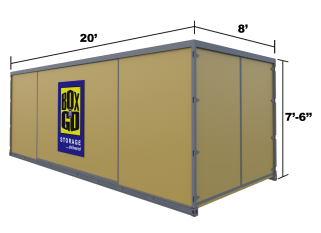
20’ Container – all weather.
Perfect for 3-bedroom residence.
5-7 rooms, furniture, appliances, etc.
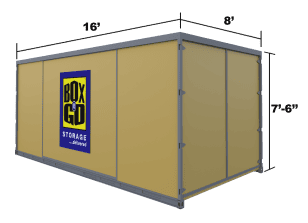
16’ Container – all weather.
Perfect for 2-bedroom residence.
3-5 rooms, furniture, appliances, etc.
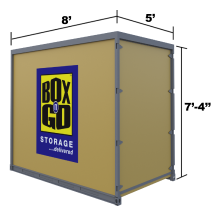
8’ Container – all weather.
Modular – works for any need.
Each fits 1-1.5 rooms.
A Look at Affordable Storage Companies
When you start searching for storage, you’ll quickly see a few big names pop up. Each company has its own approach, so what works for your neighbor might not be the best fit for you. Some focus on rock-bottom prices, others on top-notch security, and some offer unique services that can make moving day a whole lot easier. Let’s break down some of the most popular and affordable storage companies to help you see which one aligns with your needs.
Box-n-Go
If you dread the idea of renting a truck and loading it just to unload everything again at a storage facility, Box-n-Go is designed for you. They offer a different model with portable storage containers delivered right to your door. You can pack at your own pace, and once you’re done, they’ll pick up the container and move it to their secure facility. This approach saves you time and a ton of effort. Plus, when you need to access your things, you can get to your unit at ground level, which means no dealing with elevators or long hallways. It’s a convenient and affordable self storage solution, especially for anyone in the middle of a move.

Public Storage
You’ve probably seen their bright orange signs everywhere. As one of the largest self-storage providers in the country, Public Storage is known for its sheer number of locations and wide variety of unit sizes. This makes it a reliable and accessible option for almost anyone. They frequently offer promotional rates, like the first month for $1, which can be a great way to save money upfront. If you need a standard, no-frills storage unit and want plenty of locations to choose from, they are a solid and straightforward choice. Their widespread presence means you can likely find a facility close to home.
CubeSmart
CubeSmart puts a strong emphasis on the customer experience, blending affordability with great service and security. If you’re storing sensitive items like wooden furniture, electronics, or important documents, their climate-controlled units are a huge plus. They are also known for having clean facilities and helpful staff. CubeSmart often includes amenities like free moving trucks for new customers, which can add a lot of value. For those who want peace of mind knowing their belongings are in a secure, well-maintained environment with a supportive team, this company is a fantastic option to consider.
U-Haul
U-Haul is a household name for moving trucks, but they also offer comprehensive self-storage solutions. The biggest advantage here is convenience. If you’re already renting a truck from them, you can seamlessly coordinate your storage needs at the same time. This one-stop-shop approach simplifies the logistics of moving day. U-Haul storage facilities provide a range of unit sizes, and their pricing is often competitive. It’s an ideal choice for anyone looking to streamline their move by getting their truck rental and storage unit from the same trusted provider.
Extra Space Storage
If your top priorities are a low price and solid security, Extra Space Storage is a strong contender. They often have some of the most competitive rates on the market, with deals for new customers. But a low price doesn’t mean they skimp on safety. Most of their facilities are equipped with modern security features like electronic gate access and 24/7 video surveillance, giving you confidence that your items are protected. Extra Space Storage is a great fit for budget-conscious individuals who still want the assurance of a secure and professionally managed facility.
How to Avoid Hidden Fees
Nothing sours a great deal faster than discovering a bunch of hidden fees on your first bill. That amazing $50-a-month offer can quickly become $85 when you factor in mandatory insurance, one-time administrative charges, and other costs that weren’t advertised in big, bold letters. The best way to protect your budget is to go in with your eyes open and a list of questions ready.
A truly affordable storage solution is one with transparent pricing. Before you sign a contract, make sure you have a complete picture of every single charge you’ll be expected to pay, both upfront and monthly. Don’t be afraid to ask for a full breakdown of costs. A reputable company will be happy to walk you through their fee structure. To make sure you cover all your bases, let’s look at the three most common surprise fees and how you can get ahead of them.

Understand the Insurance Policy
Most storage facilities require you to have insurance for your stored items, and for good reason—it protects your belongings. However, this is often an extra cost. Before you sign up for the facility’s in-house policy, check if your existing homeowner’s or renter’s insurance already covers personal items in storage. This can sometimes save you money. It’s important to understand what any required insurance policy covers and whether it’s included in the rental price or billed as a separate monthly fee. Always ask for the policy details in writing.
Ask About Admin Fees
Many storage companies charge a one-time administrative fee to set up your account. Think of it as a processing or application fee. While it’s not a recurring cost, it can be an unexpected expense right at the start. These admin fees can range anywhere from $20 to $50, so it’s not a small amount. The easiest way to handle this is to ask about it directly before you agree to anything. A simple question like, “Are there any one-time admin or setup fees?” will get you the clear answer you need and prevent a surprise on your first invoice.
We deliver the best storage solutions. No gimmicks:
- No truck to rent. We deliver storage to you!
- Load/Unload only once.
- Pay only for space you use.
- Secure, climate-friendly facility.
- Drive-up access
No Truck to rent…EVER!
- Save money and time.
- Reduce the risk of accidents and injuries.
- No need to pay for gas, insurance & mileage!
Load ONCE Storage Solution!
- You only need to load your belongings once!
- No need to load and unload it all again into a storage unit.
- All containers come with easy ground level access!
Pay Only for the Space You Use!
(if storing at our facility)
- No not need to guess on how much space you actually need.
- Order an extra 8’ x 5’ unit. Do not use it – do not pay for it.
Secure, Climate-Friendly Facility!
- Highest degree of security and protection.
- Our 8’ x 5’ units are breatheable – no mold or mildew.
- No funky smell when your belongings return.
EASY Drive-Up Access!
(if storing at our facility)
- Access your units at ground level.
- No elevators, ramps, stairs to climb.
- Schedule access appointment & drive straight to your units.
Know the Late Fee Policy
Life happens, and sometimes a payment might slip through the cracks. That’s why it’s so important to understand the facility’s late fee policy from day one. Don’t wait until you’ve missed a payment to find out the rules. Late fees can be steep and may be applied just a few days after the due date. Ask for specific details: Is there a grace period? How much is the fee? On what day is it officially charged to your account? Knowing the late fee policy upfront helps you avoid costly penalties and gives you a clear understanding of your responsibilities.
Does Location Affect the Price?
Yes, where you rent your storage unit has a huge impact on your monthly bill. Think of it like any other type of real estate—prices are almost always higher in dense, popular urban areas. A storage facility in the heart of a major city pays more for its land, taxes, and operating costs, and that gets passed on to you. This often creates a classic dilemma for anyone needing storage: do you pay a premium for a convenient location close to home, or do you drive out to the suburbs to find a better deal?
Understanding this trade-off is the first step to finding a unit that fits your budget. If you live in a city, you’ll likely find that facilities just a few miles outside the center offer significantly lower rates. The key is to figure out how much your time and convenience are worth. Are you going to access your unit weekly, or just once a year? Answering that question can make the decision much clearer. Before you start your search, it’s helpful to decide how far you’re willing to travel to save some money. This will help you narrow down your options and focus on the areas that make the most sense for you financially and logistically.

City vs. Suburb Prices
It’s no secret that storage units in major cities cost more than their suburban counterparts. In a sprawling metro area like Los Angeles, for example, the average monthly price for a unit can be steep, and finding something affordable can feel like a real challenge. This isn’t unique to LA; it’s a common pattern in most large cities across the country. The high demand for space and the higher cost of land in urban centers directly translate to more expensive storage rates for customers. If you’re starting your search downtown, be prepared for sticker shock compared to what you might find just a short drive away.
Weighing Convenience Against Cost
The traditional solution to high city prices is to look for storage in less central neighborhoods or nearby suburbs. For instance, someone in Los Angeles might find more budget-friendly options in the San Fernando Valley. While this can save you money, it means you have to be willing to drive further every time you need to access your belongings. This trade-off between cost and convenience is a major consideration for many people.
However, you don’t always have to choose between an expensive unit nearby and a cheap one far away. Services that offer portable storage containers change the equation entirely. Instead of you driving to a facility, the storage unit is delivered directly to your home. You can load it on your own schedule, and then it’s picked up and stored in a secure warehouse. This model gives you the best of both worlds: the convenience of at-home loading and the affordability of off-site storage.
Get the Most Out of Your Storage Space
Once you’ve found the right storage unit, the next step is to use it wisely. Getting the most out of your space isn’t just about playing a real-life game of Tetris to fit more stuff in; it’s about making your life easier down the road. A well-organized unit means you can find what you need without unpacking everything, which is a lifesaver when you suddenly need those winter coats or the stand mixer you stored away. This foresight can even help you save money. By packing strategically, you might find you can rent a smaller, more affordable unit. Plus, you’ll avoid the frustration and expense of buying a replacement for something you own but can’t locate in a mountain of boxes.
Think of it as setting up a small, organized warehouse for your belongings. A little planning upfront prevents a lot of headaches later, ensuring you can access your items smoothly whenever you need them. This approach turns your storage unit from a simple box into a functional extension of your home. It also protects your valuables from damage that can happen in a poorly packed space, like crushed boxes or scratched furniture. Taking the time to organize is the ultimate efficiency hack. It aligns with the goal of simplifying your move and storage experience, ensuring that when it’s time to retrieve your items—whether it’s one box or the entire unit—the process is just as painless as moving them in.

Pack Your Items Efficiently
Smart packing is the foundation of a great storage experience. Start by using sturdy, uniform-sized boxes, as they are much easier to stack securely than a random assortment of bags and mismatched containers. Disassemble large furniture like tables and bed frames to save a surprising amount of room. It’s also a good idea to label every box on multiple sides with its contents and the room it belongs to. When your storage containers are delivered right to your door, you have the advantage of packing at your own pace. This eliminates the rush of a rental truck deadline, giving you time to pack thoughtfully and create a detailed inventory list.
Keep Your Unit Organized
How you arrange your unit is just as important as how you pack your boxes. Before you start loading, have a plan. A great strategy is to create a central aisle from the door to the back of the unit, giving you a path to access everything. Place items you might need sooner, like seasonal decorations or important documents, right at the front for easy retrieval. Heavier boxes should always go on the bottom to create a stable base, with lighter ones on top. With flexible portable storage units, you get ground-level access, so you can walk right in and organize without struggling with ramps or lifts, making the entire process more efficient.
Related Articles
- Find Cheap Storage Units: The Ultimate Guide – Box n Go Storage and Moving
- Find Cheap Self Storage Near Me: A Practical Guide – Box n Go Storage and Moving
- Secure Self Storage: Your Ultimate Guide – Box n Go Storage and Moving
- 5×10 Self Storage Units: What Fits & How Much it Costs – Box n Go Storage and Moving
- Renting a Storage Locker: Types, Costs, and More – Box n Go Storage and Moving
Frequently Asked Questions
What’s the biggest mistake people make when choosing a storage unit? The most common pitfall is choosing a unit based on price alone without considering other factors. A super-low price might mean the facility has poor security, is in a difficult-to-access location, or has terrible customer reviews. Another frequent mistake is guessing on the unit size. Renting a unit that’s too large means you’re paying for empty space every month, while choosing one that’s too small creates a stressful and disorganized move-in day.
Is climate control really worth the extra money? It completely depends on what you plan to store. If you have items that are sensitive to temperature swings or humidity, then yes, it’s a worthwhile investment. Things like wooden furniture, electronics, musical instruments, artwork, and important documents can be permanently damaged by heat, cold, or moisture. For more durable items like patio furniture, tools, or clothing packed in sealed containers, you can likely save the money and skip this feature.

How can I be sure I’m choosing the right size unit? Start by taking a quick inventory of what you need to store, paying special attention to your largest items. Most storage companies have online size guides with visual examples that are incredibly helpful for estimating your needs. A good rule of thumb is to choose the smallest size you think you’ll need, as you can often fit more than you expect by packing efficiently and disassembling furniture. This prevents you from overpaying for space you won’t even use.
Besides the monthly rent, what other fees should I be prepared for? It’s smart to ask about additional costs before you sign a contract. Many facilities charge a one-time administrative fee to set up your account. You will also likely be required to have insurance for your belongings, which can either be purchased through the facility or covered by your existing homeowner’s or renter’s policy. Finally, make sure you understand the late fee policy, including how much the fee is and if there’s a grace period.
Is it better to get a cheap unit far away or a pricier one close to home? This comes down to how often you’ll need to access your things. If you plan to visit your unit frequently, the convenience of a nearby location might be worth the higher cost. If you’re storing items long-term and won’t need them for months, driving a bit farther to save money makes sense. You can also consider a hybrid option like a portable storage container, which is delivered to your home for easy packing and then stored at a secure facility, giving you both convenience and affordability.
